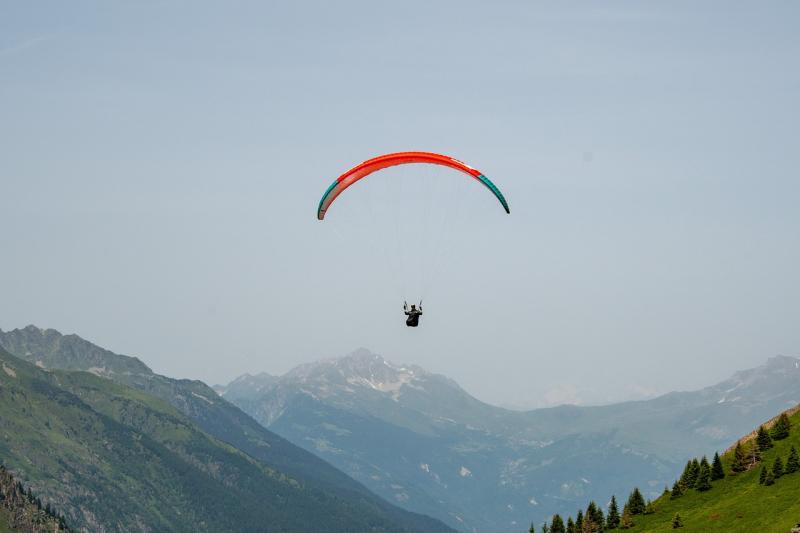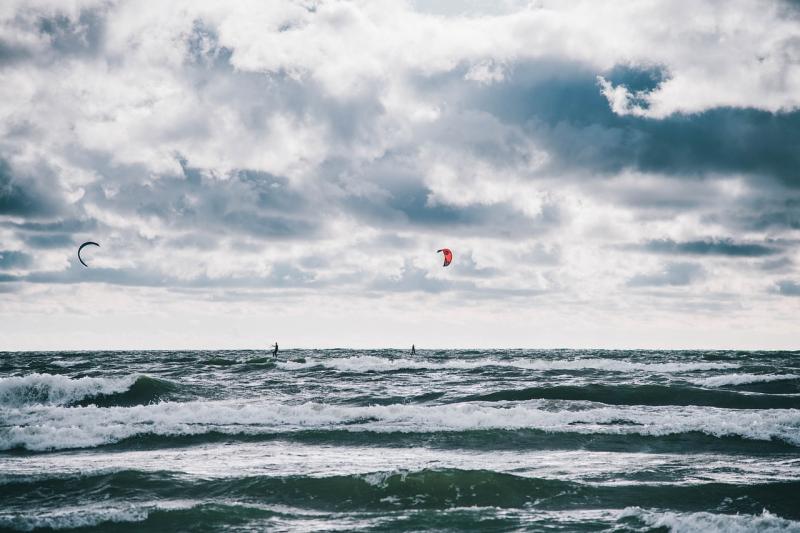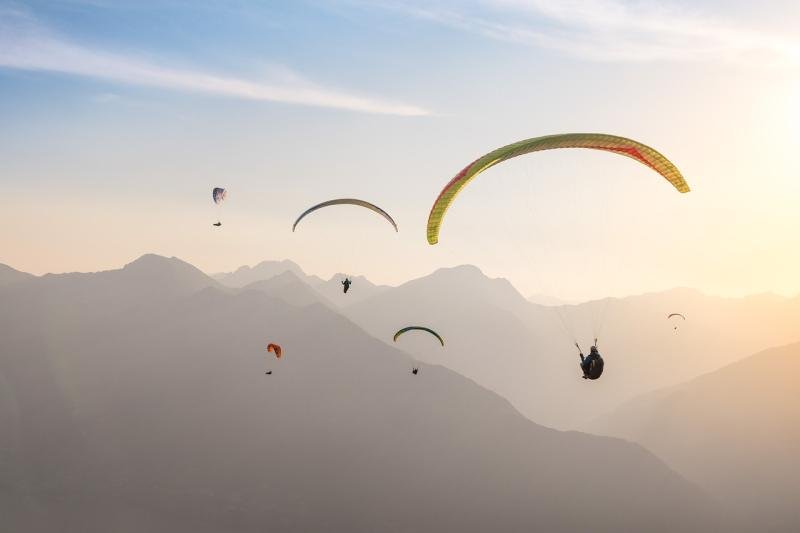When it comes to choosing a paraglider, there are a few key factors to consider. The size and type of wing you need will depend on your skill level and the type of flying you plan to do. Beginners will want a stable and forgiving wing, while more experienced pilots may opt for a higher performance glider. It's also important to consider the wing's weight range, as flying a wing that is too small or too large for your weight can be dangerous.
In addition to the paraglider, you will need a harness to attach yourself to the wing. A good harness should be comfortable, adjustable, and have plenty of storage space for your essentials. Some harnesses also come equipped with a reserve parachute in case of emergencies. Be sure to try on different harnesses and find one that fits well and suits your flying style.
Lastly, you will need a helmet to protect your head in case of a crash. Look for a helmet specifically designed for paragliding, as they are constructed to withstand the impacts common in this sport. Safety should always be your top priority when choosing equipment, so invest in high-quality gear from reputable brands.
Safety Tips for Paragliding Beginners
1. Take Lessons: Before attempting to paraglide on your own, it's essential to take lessons from a certified instructor. They will teach you the fundamentals of paragliding, including how to control the glider, how to handle emergency situations, and how to land safely. Having proper training will help you build confidence and reduce the risk of accidents.
2. Check the Weather: Weather conditions play a crucial role in paragliding safety. Always check the forecast before heading out to ensure that conditions are suitable for flying. Avoid flying in strong winds, thunderstorms, or turbulent weather. It's also important to be aware of changing weather patterns and to have a plan in place for emergencies.
3. Inspect Your Gear: Before each flight, carefully inspect your paragliding equipment to ensure that everything is in good working condition. Check the lines, harness, carabiners, and reserve parachute to make sure that there are no signs of wear or damage. Properly maintained gear is essential for a safe and successful flight.
4. Start Slow: As a beginner, it's important to start slow and gradually build up your skills and confidence. Avoid taking unnecessary risks or attempting advanced maneuvers before you're ready. Focus on mastering the basics of launching, controlling, and landing the glider before advancing to more challenging flights. Remember, safety should always be your top priority when paragliding.
Finding the Best Paragliding Locations
Paragliding is an exhilarating adventure sport that allows people to soar through the skies like birds. However, finding the best locations to paraglide can sometimes be a challenge. When looking for the perfect spot to take flight, it's important to consider a few key factors.
One of the most important things to consider when choosing a paragliding location is the weather conditions. Ideal paragliding spots have consistent wind patterns and minimal turbulence. Look for locations with a good mix of thermal activity and smooth, predictable winds for a more enjoyable flying experience.
Another factor to consider is the scenery. Paragliding allows you to take in breathtaking views from high above, so choosing a location with stunning landscapes is essential. Whether you prefer soaring over lush green valleys, rugged mountains, or crystal-clear lakes, pick a spot that offers the scenery you find most captivating.
Safety is also a critical consideration when choosing a paragliding location. Look for certified flying sites with experienced instructors and proper equipment rentals. It's important to prioritize your safety and select a location that follows strict safety protocols to ensure a smooth and secure flying experience.
Benefits of Paragliding for Adrenaline Junkies
Paragliding is an exhilarating sport that offers a unique adrenaline rush for those seeking adventure. Unlike traditional forms of aviation, paragliding allows individuals to soar through the sky with just a parachute-like wing and harness. This sense of freedom and weightlessness is unmatched by any other experience, making it a favorite among adrenaline junkies.
One of the key benefits of paragliding for adrenaline junkies is the thrill of taking off from a high vantage point and gliding through the air. The feeling of jumping off a cliff or hill and gaining altitude as you catch thermals is a truly exhilarating experience. The rush of adrenaline as you launch yourself into the open sky is indescribable and addictive for those who crave excitement.
Another benefit of paragliding for adrenaline junkies is the sense of control and mastery that comes with navigating the wind currents and thermals. Pilots must constantly adjust their position and speed to stay airborne, making split-second decisions that can mean the difference between a smooth flight and a rough landing. This challenge adds an extra layer of excitement to the sport, keeping adrenaline junkies coming back for more.
Lastly, paragliding offers adrenaline junkies the opportunity to see the world from a completely different perspective. Flying high above the ground gives pilots a bird's eye view of the landscape below, allowing them to appreciate the beauty of nature in a way that few others can. This unique combination of excitement, challenge, and beauty makes paragliding an unparalleled experience for adrenaline junkies looking to push their limits and soar to new heights.



